Descriptions of the Functional Diagnostic Laboratory Testing
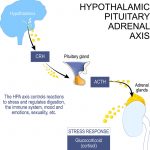
Adrenal Stress Profile with CAR (cortisol awakening response) (saliva test undertaken at home)
A Comprehensive Tool to Assess the HPA Axis — Stress Response and Resiliency
The Adrenal Stress Profile (ASP) provides an assessment of the Hypothalamic-Pituitary-Adrenal (HPA) axis using carefully timed salivary samples of the hormones cortisol and DHEA. Salivary testing is an easy, non-invasive option to measure unbound, biologically active parent hormone levels.
DHEA is measured once in the 7:00 – 9:00 AM sample and a ratio of DHEA to cortisol is calculated to provide insight into anabolic/catabolic balance.
Cortisol Awakening Response (CAR)
- Two awakening samples to evaluate CAR
- CAR is a transient, immediate rise in cortisol upon awakening and is distinct from the diurnal rhythm. CAR reflects a person’s ability to cope with anticipated challenges and their perception of control around chronic stress, providing insight into HPA axis resiliency.
Daily hassles, chronic pain, blood sugar dysregulation, work stressors, and poor relationship quality can alter the HPA axis. Imbalances in adrenal hormones can have a wide range of negative consequences that can adversely impact a patient’s overall quality of life.
The symptoms of HPA axis dysfunction and conditions may include:
- Cardiovascular disease
- Chronic pain
- Chronic fatigue
- Diabetes and metabolic syndrome
- Depression
- Feeling unrefreshed after sleep
- Gastrointestinal and immune dysregulation
- GI complaints
- Hypertension
- Insomnia
- Neurodegenerative disease and cognitive decline
- Persistent pain
- Weight gain
- Wired and tired
The report offers an easy-to-interpret graphic which plots the results of cortisol’s natural diurnal rhythm. Adrenal Stress Profile testing can reveal these HPA axis imbalances and provide direction for clinical intervention with targeted therapeutic treatments, such as nutrient support and/or adaptogens, stress management, behavioural modification, and lifestyle interventions.
Click here to order an adrenal and DHEA saliva test to find out what your cortisol levels are which could be causing you fatigue or feeling wired and tired.

Candida (stools and mouth swab tests undertaken at home)
This stools test will analyse a fungal colonisation including all candida species and other yeast or moulds in the intestinal lumen.
Fungi are part of the normal intestinal flora, but if the host’s micro ecology is out of balance, they can change into a more invasive form, multiply and change their metabolism causing pathogenic overgrowth.
Signs and symptoms can include:
- Inflammation
- Intolerances (also see food intolerance and intolerances)
- Jock itch
- Low immune function (also see Metabolomix +)
- Micro-flora imbalance
- Psoriasis
- Skin rashes / itching
- Sugar cravings
- Thrush
- Rectal itching
- Ring worm
To find out whether your bloating and other symptoms may be caused by candida, click here to order your test.
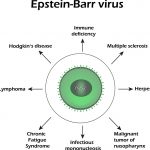
Epstein-Barr Virus (blood draw through an independent clinic or phlebotomist)
Epstein-Barr is the virus that causes mononucleosis (glandular fever). This disease is better known by its nickname “mono.” It’s also called the “ kissing disease” because it’s one way you can spread it to someone else. Although EBV is best known as the cause of infectious mononucleosis (glandular fever), it is also associated with particular forms of cancer, such as Hodgkin’s lymphoma, Burkitt’s lymphoma, nasopharyngeal carcinoma, and central nervous system lymphomas, associated with HIV.
The Epstein-Barr Virus Elispot-LTT test is designed to detect the Epstein–Barr virus (EBV), also called human herpesvirus 4 (HHV-4), which is of the herpes family, and is one of the most common viruses in humans.
The Epstein-Barr virus is best known as the cause of infectious mononucleosis (glandular fever). However, it’s also associated with particular forms of cancer, such as Hodgkin’s lymphoma, Burkitt’s lymphoma, nasopharyngeal carcinoma, and central nervous system lymphomas, associated with HIV.
Elispot-LTT tests:
The result of the EliSpot test indicates current cellular activity against Epstein-Barr-Virus (EBV).
- EBV-lytic antigen: sign for replication of infectious EBV virions
- EBV-latent antigen: sign for EBV latency with no production of infectious EBV virions
Latent phase is the so called sleeping phase, which can be reactivated = past infection.
Lytic phase reflects an activity phase = current replication of the virus.
Symptoms can include:
- Abdominal Discomfort
- Anemia
- Body aches, malaise, myalgia (muscle pain)
- Cervical lymph node enlargement
- Chills
- Decreased appetite
- Depression
- Ear pain or buzzing in the ear
- Elevated alanine aminotransferase
- Enlarged liver
- Enlarged spleen
- Eyelid edema
- Feeling much worse on immunosuppressive medications
- Fever
- Headaches
- Hypersensitivity to mosquito bites
- Inability to exercise or recover from exercise
- Increased white blood cells
- Low platelets, causing easy bruising
- Lymphadenopathy
- May become temporarily bed ridden
- Pharyngitis
- Rashes
- Significant fatigue (feeling like a truck ran you over)
- Some loss of balance
- Sore throat
- Vomiting
Click here to find out whether EBV is causing or contributing to your health issues

Food intolerance (blood spot undertaken at home)
Do some foods just not sit right with you?
Food intolerances can contribute towards different health issues. Testing can help pinpoint which foods and key allergens might be creating problems . By identifying these, it will allow the body to heal, reduce inflammation, and repair the gut lining. Food intolerances can often be reversed after a period of elimination and recommended treatment and advice.
Food intolerances can also often arise from toxicity, chemicals, artificial additives, vitamin, mineral and nutritional deficiencies to name but a few.
There are several tests available. Please contact healthy-u to discuss your needs so that the most suitable test can be recommended to you.
Signs and symptoms:
- Belching
- Bloating (also see Candida, GI Map and SIBO)
- Diarrhoea (also see GI Map)
- Headache or migraines
- Heart burn
- Hypothyroidism (also see Thyroid)
- IBS (also see GI Map)
- Milk and yoghurt give stomach upset
- Muscle and/or joint ache
- Nutritional deficiencies (also see Metabolomix +)
- Pain
- Rashes, eczema and other skin conditions
- Tiredness despite good sleep (also see Adrenal)
- Wired after caffeine
Your results will clearly show which are the offending foods and the degree of intolerance. You can also be provided with information on safe nutritional alternatives, including supplements and superfoods which, if followed correctly, should help your body to recover through a prebooked consultation with healthy-u.
To find out whether you have any food intolerances that may be affecting your health, click here .

GI Map with Zonulin (stools test undertaken at home)
The health of the gut is an important foundation for our overall health. It should often be considered as a first point of investigation regardless of simple or complex health issues. Many facets of modern life such as stress, not enough sleep, eating processed and sugary foods, and taking antibiotics can all damage our gut health.
The GI-MAP is the first and only gut test in the world to be running full quantitative PCR (qPCR) on multiple GI targets, including pathogens, bacteria, worms, yeasts, parasites and comprehensive antibiotic resistant genes, alongside intestinal health and immune markers.
The GI-MAP was designed to assess a patient’s microbiome from a single stool sample, with particular attention to microbes that cause disease or that disrupt normal microbial balance and contribute to perturbations in the GI flora and contribute to illness. With full quantification, we can now see the level of infection thus, the GI-MAP arms the clinician with accurate, actionable clinical information.
- Antibiotic resistance genes
- Anti-gliadin sIgA
- Bacterial autoimmune triggers
- Beta-glucuronidase
- Calprotectin
- Commensal bacteria (inc. B.fragilis)
- Dysbiotic bacteria
- Epstein Barre Virus
- Faecal Occult blood
- Helicobacter Pylori and virulence genes
- Opportunistic parasites
- Pancreatic elastase 1
- Pathogenic bacteria, toxins, parasites and viruses
- Phyla microbiota ratios
- Secretory IgA (sIgA)
- Steaotocrit
- Worms
- Yeast, fungi and moulds
- Zonulin (a protein that regulates tight gap junctions in the gastro intestinal tract and modulates intestinal permeability)
- Acne and skin conditions
- Allergies
- Bacteria
- Bloating
- Brain fog and memory issues
- Candida
- Diarrhoea
- Digestion
- Constipation
- Fatigue
- Faecal occult blood
- Fungal/yeast problems
- Gut flora imbalance
- IBS/IBD
- Inflammation
- Leaky gut symptoms
- Low energy
- Low immunity
- Parasites
- Slow metabolism
- Weakness
- Weight gain
- Worms
Click here to book your 4-5 page Gi Map to help identify, heal and repair your gut as a step towards better health.

Heavy metals – DMSA Toxic Metals Provocation Screen (urine test undertaken at home)
In our current world we are exposed to thousands of toxins on a daily basis. We ingest, inhale, absorb, drink, breathe, our food, cosmetics and skin care, pesticides, chemicals, pollution, paints, cigarette smoke and the list goes on. Some of these toxins resist metabolism and excretion and instead accumulate in body tissues which burdens our bodies causing ill health.
A screen for 20 toxic metals elements (using inductively coupled plasma mass spectrometry ICP-MS). These include:
Aluminum, Antimony, Arsenic, Barium, Beryllium, Bismuth, Cadmium, Cesium, Gadolinium, Lead, Mercury, Nickel, Palladium, Platinum, Tellurium , Thallium, Thorium, Tin, Tungsten, Uranium.
The oral administration of 15 mg of DMSA per kg body weight is used to provoke the release and excretion of mercury and other heavy metals in the urine samples provided.
)Heavy metals are toxic to human beings, even in low concentrations. Any metal with a high density at the molecular level is considered a heavy metal. Some of the most common heavy metals are mercury, aluminium and lead. You are exposed to these heavy metals constantly, from the air, our food and water. When your body absorbs these toxins, they build up inside, often causing toxicity signs and symptoms which can include:
- Confusion
- Constipation
- Cramping and abdominal pain (also see GI Map)
- Difficulty breathing
- Fatigue (also see Adrenal and Thyroid)
- Headaches
- Joint pain and muscle pain
- Metallic or sour taste in mouth
- Nausea
- Night sweats
- Skin problems and rashes
- Vomiting
The results will show which heavy metals are present and at what levels, which may be contributing to health issues. The report also comes with handy additional information and explanations. Once heavy metals are identified then we can work towards gently chelating whilst supporting health.
Click here to find out whether heavy metals are affecting your health.
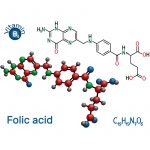
Homocysteine (blood draw through an independent clinic or phlebotomist)
Homocysteine is a non-essential, thiol-containing amino acid which is produced from the intra-cellular de-methylation of dietary methionine. High homocysteine levels can increase the risk for dementia, stroke or heart disease. It is reliant on Vitamins B12, B6 and folate to break down homocysteine to create other chemicals the body needs, and to export from the cells to circulate in the blood in an oxidised form.
There are two major pathways for its further metabolism:
- trans-sulphuration to cysteine (by a vitamin B6-dependent pathway)
- re-methylation to methionine (by a vitamin B12 and folic acid-dependent pathway).
Vitamin B2 is also required for homocysteine metabolism on account of its role in the re-cycling and maintenance of folic acid levels.
Excess homocysteine accumulates in the plasma when these pathways are not operating at optimum activity.
While homocystinuria (homocystine in the urine with elevated plasma homocysteine levels) has been known since 1962, the pathological role of moderate hyper-homocysteinemia has only been generally recognised over the past decade.
Men, on average, have a slightly higher plasma homocysteine level than women. This is thought to be associated with greater muscle mass, which increases the demand on the labile methyl pool for the synthesis of creatine.
Signs and symptoms can include:
- Developmental delay
- Osteoporosis (thin bones)
- Visual abnormalities
- Formation of blood clots
- Advanced atherosclerosis or narrowing and hardening of blood vessels, a type of heart disease.
A course of action will be established once the results are released.
Click here to book your homocysteine test now.

Hormones (saliva test undertaken at home)
Many conditions, from PMS to premature ejaculation, or endometriosis to fertility problems and more, can be traced back to the level of active, bio-available hormones present in a person’s body. There are several hormone tests available to assess these levels.
Blood hormone tests assess total levels found in the body.
When treating hormonal-based conditions and afflictions, assessment of the hormonal levels found in the body’s tissues are most likely to cause the symptoms a person experiences. Saliva based hormone tests are therefore the preferred method.
Healthy-u can advise which test would suit best, based on symptoms and conditions.
The testing options can include:
- Adrenal stress profile * see adrenal section
- Female hormone profile
- Male hormone profile
- 28-day female cycle hormone
- Thyroid T3, T4 and iodine (urine) * see thyroid section
Health related conditions for men and women:
- Anxiety
- Breast lumps
- Depression
- Endometriosis
- Erectile dysfunction
- Fatigue
- Fibroids
- Infertility
- Menopause
- PMT
- Poly cystic ovarian syndrome
- Pre-mature hair loss
- Recurrent miscarriage
- Skin disorders
By gauging the bio-available hormone levels present in saliva, you can be provided with a comprehensive, detailed assessment of your body’s hormonal environment and composition. From this it can be ascertained whether any symptoms experienced are associated with a hormonal imbalance or lack of specific active hormones. This information can then address the cause of the problem by rectifying any imbalance discovered throughout the test.
Book your hormones test by clicking here .

Intolerances: Fructose, Gluten & Lactose (all 3 individual tests undertaken at home)
Fructose (breath test)
This breath test using fructose as the substrate helps to determine whether there is a fructose intolerance or malabsorption which may be contributing to unwanted gases.
The breath collection device included in the fructose kit ensures accurate measuring of alveolar air and not room air, thus guarding against potential false negatives associated with other breath collection processes.
Gluten (stools test)
This anti-transglutaminsase-sIgA test can detect celiac disease by measuring specific sigA’s against the enzyme tissue-transglutaminase, a method which was devised in 1997.
Unfortunately gluten needs to be consumed at least one week prior to the test to provoke antibodies. This test is indicated in all cases where celiac disease is suspected, which can cause different typical or sometimes non typical symptoms.
Lactose (swab test)
Primary lactose deficiency is the most frequent form and is hereditary. Secondary lactose deficiency occurs when the surface of the small epithelium is damaged by disease.
Various diseases can lead to a loss of lactose activity. Symptoms can include diarroeah like problems and tummy aches plus more.
A simple mouth swab gene test is a new detection method, by taking a simple swab of the mouth mucosa inside the cheek. Epithelial cells stick to the cotton bud. The investigation is done on their cell nuclei.
Results of any of these tests will determine a course of action as part of a health improvement plan.
Find out whether you have a fructose, gluten or lactose intolerance by clicking here .

Lyme disease and co-infections (blood draw through an independent clinic or phlebotomist)
Lyme disease is caused by the spirochete bacterium Borrelia burgdorferi (Bb), which is mostly transmitted to humans through a tick bite. As the infection spreads it can infiltrate multiple tissues and systems throughout the body creating debilitating and often mysterious symptoms
.
Lyme disease often either goes undiagnosed for many years with the patient not knowing what is wrong with them or sometimes it gets misdiagnosed as fibromyalgia, chronic fatigue and MS. Diagnosis of MS is often given as the lesions on an MRI appear the same for both diseases.
The TickPlex Plus assay is performed on the basis of an ELISA. However, compared to other ELISA assays, this test contains a new antigen for round bodies/persistent forms of Borrelia.
TickPlex Plus is an accredited test and can be used at different stages of the disease. TickPlex Plus allows the simultaneous determination of IgM and IgG antibodies of several bacterial and viral pathogens. With its high sensitivity of approx. 95% and a specificity of 98%, TickPlex is superior to comparable IFA test methods that have been used so far.
Determination of IgM and IgG antibodies of the following bacterial and viral pathogens:
- Borrelia burgdorferi
- Ehrlichia
- Bartonella
- Babesia
- Mycoplasma
- Rickettsia
- Epstein Barr Virus (EBV)
- Coxsackie-Virus
- Parvovirus
This test pushes forward our options in understanding tick related conditions, and in confirming that the so-called ‘dormant’ forms of Borrelia are actually separate, motile organisms whose DNA provokes an independent immune response.
Symptoms
Lyme disease can be a complex condition. There is insufficient knowledge about this debilitating disease which can show itself in many forms and is often regarded as the great mimicker by Lyme literate practitioners . Transmission of Lyme disease can occur when bitten by an infected tick but it is also thought that it may include from mother to baby, mosquitoes, spiders, blood, tissue and organ donation, and sexual transmission.
Lyme disease symptoms are numerous and can vary significantly from case to case, perhaps due to differences in the strain of Borrelia, genetics and immune responses, the mixture of co-infections or other opportunistic infections present and environmental factors.
The symptoms can change from day to day as well as over longer periods of time. They can start suddenly or develop slowly over time – some people report an initial flu-like illness followed by a period of wellness before a slow decline whereas some become unwell and simply don’t recover.
You do not have to have all the symptoms listed to have a Lyme disease infection and symptoms in children can present differently. The most frequently reported symptoms are as follows:
Early symptoms
- Bull’s-eye rash, known as erythema migrans (EM). This is diagnostic of Lyme disease but it isn’t always present
- Digestive issues
- Fatigue
- Fever and chills
- Headaches
- Muscle and joint pain
- Nausea
- Neck stiffness
Late Symptoms
- Anxiety and depression
- Cognitive problems such as memory issues, word finding difficulties and ‘brain fog’
- Disturbed sleep – either too little or too much
- Dysautonomia – dysfunction of the autonomic nervous system causing issues with heart rate, blood pressure etc
- Fatigue and post exertional malaise
- Headaches and migraines
- Heart problems – such as inflammation of the heart muscle (myocarditis) or peridcardial sac surrounding the heart (pericarditis), heart block and heart failure
- Inflammation of the membranes surrounding the brain and spinal cord (meningitis) – which can cause a severe headache, stiff neck and increased sensitivity to light
- Neuropathy, or nerve malfunction, which can be caused by nervous system inflammation in various parts of the body.
- Neuropsychiatric problems, like depression, anxiety, headaches, brain fog, mood swings, emotional lability, suicidal thoughts, and cognitive dysfunction. Often exacerbated by not knowing what is causing the illness
- Pain and swelling in the joints (inflammatory arthritis)
- Problems affecting the nervous system – such as peripheral neuropathy, paralysis of facial muscles (Bell’s palsy)
- Vertigo and dizziness
- Vision and hearing problems
- Dementia
- Depression and Anxiety disorders
- Fibromyalgia
- Hashimoto’s thyroiditis
- Labyrinthitis
- ME, Chronic Fatigue Syndrome and post viral fatigue syndrome
- Migraine
- MS
- Other autoimmune diseases
Results will confirm whether there is Lyme and co-infections present which is affecting health, and if so a staged individual treatment plan will be put in place with regular monitoring and adjustments as necessary.
Click here to help identify if Lyme disease is affecting your health. Lyme disease can go undetected for years yet create debilitating symptoms that are misdiagnosed or unexplained.
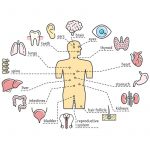
Metabolomix + (urine undertaken at home)
optional add on extras:
essential and metabolic fatty acids (bloodspot undertaken at home)
genetic markers (buccal swab undertaken at home)
The Metabolomix+ is one of the most comprehensive functional and nutritional assessments available. It is designed to help practitioners identify root causes of dysfunction and provide a systems-based approach to help patients overcome chronic conditions and live a healthier life.
A first morning urine collection assesses organic acids, amino acids, oxidative stress markers, antioxidants, B-vitamins, minerals, digestive support and fatty acids.
Optional additional markers can include a bloodspot finger prick for essential and metabolic fatty acids and a buccal swab for genetic markers.
Common clinical indications for testing may include:
- Chronic Stress
- Fatigue
- Inflammation
- Mitochondrial Dysfunction
- Mood Disorders
Several diseases are associated with abnormal organic acid, amino acid, and fatty acid levels such as:
- Anorexia
- Anxiety
- Cancer
- Cardiovascular disease
- Depression
- Diabetes
- Neurocognitive decline
- and many others
The Metabolomix+ Profile report categorizes results into several metabolic areas:
Organic Acids (urine)
- Malabsorption and Dysbiosis Markers are metabolites produced by the gastrointestinal microbiome
- Cellular Energy & Mitochondrial Markers are biomarkers of carbohydrate and fatty acid metabolism, and the citric acid (Kreb’s) cycle
- Vitamin Markers are specific analytes used to assess functional levels of vitamin cofactors
- Neurotransmitter Metabolites are downstream byproducts of epinephrine, norepinephrine, serotonin and dopamine
- Toxin & Detoxification Markers relate to certain toxic metabolites and the body’s detoxification capacity
- NEW Oxalate Markers relate to kidney stone formation, oxidative stress and metabolic dysfunction
Amino Acids (urine)
- Essential Amino Acids must be derived from dietary sources
- Nonessential Amino Acids are synthesized by the body
- Intermediary Metabolite sare byproducts of amino acid metabolism
- Dietary Peptide Related Markers can indicate incomplete protein breakdown
Oxidative Stress Markers (urine)
- Includes the oxidative damage markers lipid peroxides and 8-OHdG
The optional add on tests include:
Essential and Metabolic Fatty Acids – ( Bloodspot – as add on)
- Omega 3 Fatty Acids are essential for brain function and cardiovascular health and are anti-inflammatory
- Omega 6 Fatty Acids are involved in the balance of inflammation
- Omega 9 Fatty Acids are important for brain growth, nerve cell myelin, and reducing inflammation
- Saturated Fatty Acids are involved in liproprotein metabolism and adipose tissue inflammation
- Monounsaturated Fats include omega 7 fats and unhealthy trans fats
- Delta-6 Desaturase Activity assesses efficiency of this enzyme to metabolize omega 6’s and omega 3’s
- Cardiovascular Risk includes specific ratios and the Omega 3 Index
Genomics SNPs – (buccal swab – as individual SNP add-ons)
- APO E (C112R + R158C)
- MTHFR Combined (A1298C + C677T)
- TNF-α
- COMT (V158M)
The comprehensive results will be able to determine deficiencies, individual needs, identify root causes of dysfunction and provide a systems-based approach to help patients overcome chronic conditions and live a healthier life with an individually tailored treatment plan.
Click here to book this worthwhile comprehensive 18 page test (with all the add ons) to find out what your body needs and is missing so that it can start thriving.

Mycotoxins – mycotox profile (urine test undertaken at home)
Certain species of mould produce mycotoxins which have the ability to damage health on a cellular level. This then causes a ‘Chronic Inflammatory Response Syndrome’ (known as CIRS), if the body is not able to eliminate them.
Mycotoxins are some of the most prevalent toxins in the environment. Mycotoxins are metabolites produced by fungi like mold, which can infest buildings, vehicles, and foodstuffs. A majority of mycotoxin exposures are through food ingestion or airborne exposure. In the European Union, 20% of all grains harvested have been found to be contaminated with mycotoxins. Unfortunately, mycotoxins are resistant to heat and many processing procedures.
Fungi are able to grow on almost any surface, especially if the environment is warm and wet. Inner wall materials of buildings, wall paper, fiber glass insulation, ceiling tiles, and gypsum support are all good surfaces for fungi to colonize. These fungi then release mycotoxins into the environment causing symptoms of many different chronic diseases.
MycoTOX screens for eleven different mycotoxins, from 40 species of mold, in one urine sample. Analytes tested:
- OCHRATOXIN A (OTA)
- AFLATOXIN M1 (AFM1)
- STERIGMATOCYSTIN (STG)
- RORIDIN E
- VERRUCARIN A
- ENNIATIN B1
- ZEARALENONE (ZEA)
- GLIOTOXIN
- MYCOPHENOLIC ACID
- DIHYDROCITRINONE
- CHAETOGLOBOSIN A
MycoTOX uses the power of advanced mass spectrometry (MS/MS), which is necessary to detect lower levels of these fungal toxins. This test is optimal for follow up testing to ensure that detoxification therapies have been successful.
Urine: 10 mL of the first morning urine before food or drink is suggested. Fasting for 12 hours may increase the excretion of mycotoxins from the adipose tissue. However, fasting is not recommended if running this test in combination with other urine tests.
Patients who need to urinate during the night should collect the sample that has been in the body the longest. If the time frame between going to bed and urinating at 2:30 AM is at least about 4-5 hours, the sample could be taken from the night urination. Do not mix together a middle of the night sample and morning sample.
- Allergic rhinitis
- Anorexia
- Asthma
- Balance problems
- Blurred vision
- Confusion
- Dermatitis
- Diarrhea
- Difficulty breathing
- Difficulty concentrating
- Dizziness
- Fatigue
- Fever
- Fibromyalgia
- Food allergies
- Headaches
- Infertility
- Irritability
- Irritable Bowel Syndrome
- Jaundice
- Legionnaires ’ disease
- Liver disease
- Nausea
- Seizures
- Sore throat
- Thyroid irregularities
- Vertigo
To find out whether Mycotoxins are affecting your health, click here to order your test.
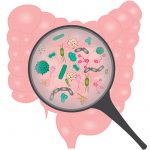
SIBO – Small Intestine Bacterial Overgrowth (breath test x 2 or 3 Lactulose, Glucose and/or Fructose)
Small intestine bacterial overgrowth (SIBO) is a common gastrointestinal disorder that often underlies chronic gastrointestinal symptoms of maldigestion and malabsorption.
A Small Intestinal Bacteria Overgrowth breath test using glucose as the substrate.
The breath test measures hydrogen and methane gasses in response to glucose, a monosaccharide. This simple carbohydrate is readily absorbed in the first section of the small intestine. For this reason, there should not be a rise in gas, as it typically does not reach the colon where bacteria metabolise carbohydrates.
If SIBO is present, the bacteria will begin to metabolise glucose, producing hydrogen and/or methane gas.
Due to its rapid absorption, glucose may not reach the distal section of the small intestine; therefore the glucose test is best used alongside lactulose to assess the entire small intestine.
A Small Intestinal Bacteria Overgrowth breath test using lactulose as the substrate.
The breath test measures hydrogen and methane gasses in response to lactulose, a disaccharide (consisting of fructose and galactose) which is poorly absorbed by the intestine. If SIBO is present, the bacteria will begin to metabolise lactulose before it reaches the large intestine, causing an early increase in gas production. The remaining lactulose will then reach the large intestine, causing a second increase in gas production.
The lactulose test is best used alongside glucose to reduce the likelihood of false-negative test results.
A Small Intestinal Bacteria Overgrowth breath test using fructose as the substrate helps to determine whether there is a fructose intolerance or malabsorption which may be contributing to unwanted gases.
The breath collection device included in the glucose, lactulose and fructose kits ensures accurate measuring of alveolar air and not room air, thus guarding against potential false negatives associated with other breath collection processes.
Signs and symptoms and common conditions:
- Abdominal pain
- Bloating
- Constipation
- Diarroeah
- Gas
- Inability to tolerate sweet, starchy food or fibre
- Irregular stools
- Irritable bowel syndrome (IBS)
- Unexplained abdominal symptoms
Once bacterial overgrowth has been detected, intervention strategies involving diet, digestive support, probiotics and antimicrobials can be used to treat the condition.
Click here to find out whether you may have SIBO

thyroid T3, T4 and iodine (urine test undertaken at home)
The thyroid gland is an endocrine gland in the neck. It makes two hormones that are secreted into the blood: thyroxine (T4) and triiodothyronine (T3). These hormones are necessary for all the cells and tissues to work normally and regulate the speed with which the body cells work. The thyroid glands are also reliant on iodine.
The elevation of thyroid hormone levels in urine, assesses tissue exposure to thyroid hormones over a 24-hour period. The urine thyroid test therefore serves as a valuable tool for detecting those patients that are suffering from thyroid dysfunction, particularly low grade hypothyroidism who might otherwise go undetected through standard blood tests.
- Aches
- Constipation
- Depression
- Dry skin
- Fatigue
- Feeling cold
- Hair loss
- Heavy or irregular periods
- Lack of concentration
- Weakness
- Weight Gain
Signs and symptoms of hyperthyroid:
- Breast development in men
- Difficulty sleeping
- Fine brittle hair
- Hair loss
- Inability to concentrate
- Increased appetite
- Itching
- Irregular heartbeat
- Nausea and vomiting
- Nervousness
- Restlessness
*Iodine urine test can be done as a stand-alone test
Iodine is an essential trace element, vital for healthy thyroid function. Adequate levels are required to enable the production of T3 and T4 thyroid hormones, whilst also being required in other areas of health. Deficiencies can lead to impaired heat and energy production, mental function and slow metabolism. Urine iodine is one of the best measures of iodine status. This test is not performed as a loading test, but can be used to establish existing levels or to monitor iodine supplementation.
Signs and symptoms of iodine deficiency:
- Changes in heart rate
- Difficulty learning and remembering
- Dry flaky skin
- Fatigue
- Feeling cold
- Heavy or irregular periods
- Hair loss
- Problems during pregnancy
- Swelling in the neck
- Weakness
- Weight gain
Once the results are back, treatment is tailored to unique results and individual health picture which helps the patient to repair, recover and get their life back.
click here to order this sensitive thyroid urine test to find out whether thyroid is causing your health issues.

vitamin D – (finger prick blood spot test undertaken at home)
Vitamin D is an extremely important vitamin that has many important functions throughout the body, including immunity.
Unlike other vitamins, vitamin D functions like a hormone. Many cells in the body have a receptor for it and makes it from cholesterol when skin is exposed to sunlight.
It is also found in certain foods such as fatty fish and fortified dairy products, though it’s very difficult to get enough from your diet alone.
Vitamin D3 (cholecalciferol)
Vitamin D2 (ergocalciferol)
= total 25-hydroxy vitamin D
This is the preferred test for vitamin D levels known as 25-hydroxy vitamin D.
The serum concentrate of 25-hydroxy vitamin D is the most sensitive and useful index of vitamin D and correlates well with the plasma parathyroid hormone concentration and alkaline phosphate activity.
Most people are very low in vitamin D2 which is of plant origin, in comparison to D3
Signs, symptoms and common conditions:
- Anxiety
- Being sick or getting infections often
- Bone and back pain
- Bone loss
- Cancer prevention
- Cardiovascular disease
- Depression
- Fatigue
- Hair loss
- Impaired wound healing
- Multiple sclerosis (MS)
- Muscle pain
- Tiredness
- Type 2 diabetes
- Weight gain or loss
A simple blood spot vitamin D3 + D2 test will determine what levels a person needs so that the right amount can be prescribed.
Find out what your vitamin levels are by clicking here .
